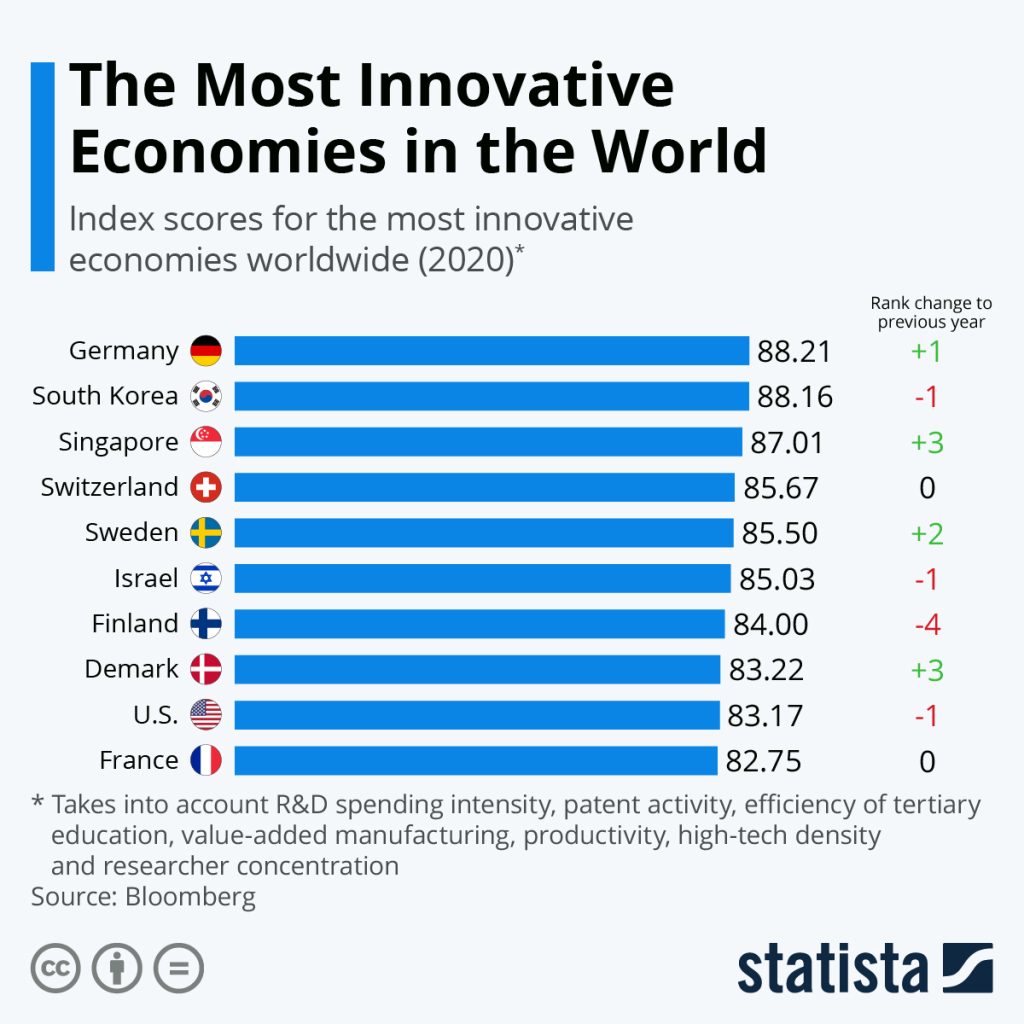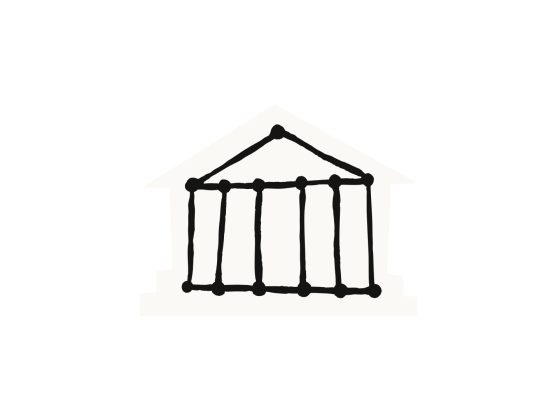Singapore is the third most innovative economy in the world for the year 2020, according to this year’s edition of Bloomberg’s Innovation Index.
If you are interested in seeing the full report, you may do so here. Here, we will boil the report down to the highlights and key insights. Let’s start.
Highlights
Germany dethrones South Korea as the most innovative economy for 2020. Prior to this, South Korea has maintained a six-year streak at the top. This year, South Korea’s performance in innovation remains strong, ranking in second place.
Following South Korea is Singapore, Switzerland, Sweden, Israel, Finland, Denmark, US, and France.
Highlighting the top 60 economies in the world as shown above. We can see that a lot of the top economies when it comes to innovation are located in Europe. Asia also has quite a large share of top rankers for this year.
Methodology
In order to come up with the rankings, Bloomberg takes into account seven dimensions:
01. R&D spending intensity, the measure of the national gross domestic product (GDP) allocated for research and development.
02. Patent activity, which is measured in terms of resident utility filings per 1 million population and per US$ 1 million of R&D spent. The number of utility patents granted is also taken into account.
03. Efficiency of tertiary education, measured in terms of number secondary education graduates enrolled in post-secondary institutions, percentage of labour force with tertiary degrees, and percentage of science and engineering graduates in the total tertiary degree graduates.
04. Manufacturing, a measure of manufacturing added value per capita
05. Productivity, referring to a country’s research outputs
06. High-tech density, measured in terms of the number of domestically domiciled high-tech companies, including but not limited to:
-
- aerospace and defense,
- biotechnology,
- hardware, software,
- semiconductors,
- Internet software and services, and
- renewable energy companies
07. Researcher concentration, measured by counting the number of professionals (including Ph.D. students) involved in R&D per 1 million population.
From the summarized scores across these dimensions, the Bloomberg Innovation is formed. The Index is a scale from 0 to 100. The closer a country’s score is to 100, the better it is in terms of innovation.
Gains and losses
While South Korea lost to Germany with a score of 88.21, it didn’t score too far behind. South Korea gained a very close 88.16. According to Bloomberg, South Korea suffered from a slump in the productivity dimension, only ranking 29th compared to the previous edition’s 18th.
In spite of being at the top, Germany still has a lot to improve. The country did score three top-five rankings in the dimensions: value-added manufacturing, high-tech density, and patent activity. However, Germany can still work on it’s services innovation.
Germany can also diversify the allocation of the R&D budget. Right now a third the budget is dedicated to the auto industry. If this industry suffers in the future, then the innovative strength of Germany will similarly take damage.
Meanwhile, Singapore reclaimed the third spot, a position it held two years ago. Bloomberg attributes this jump to the country’s gains in productivity and value-added manufacturing. Singapore has also retained the top spot for tertiary education efficiency.
A need for consistency
The United States which attained the first spot in the Index in its debut back in 2013 fell to 9th place this year. Last year it was positioned in the 8th spot.
“Innovation is a critical driver of growth and prosperity. […] the U.S. drop, is a reminder that without investment in education and research, trade tariffs aren’t going to maintain America’s economic edge,” according to Bloomberg chief economist Tom Orlik.
This is very much applicable not only for the US but also the whole world. In order to maintain excellence in innovation, there is a need to constantly learn and improve. Without this effort, a country will inevitably fall behind.











